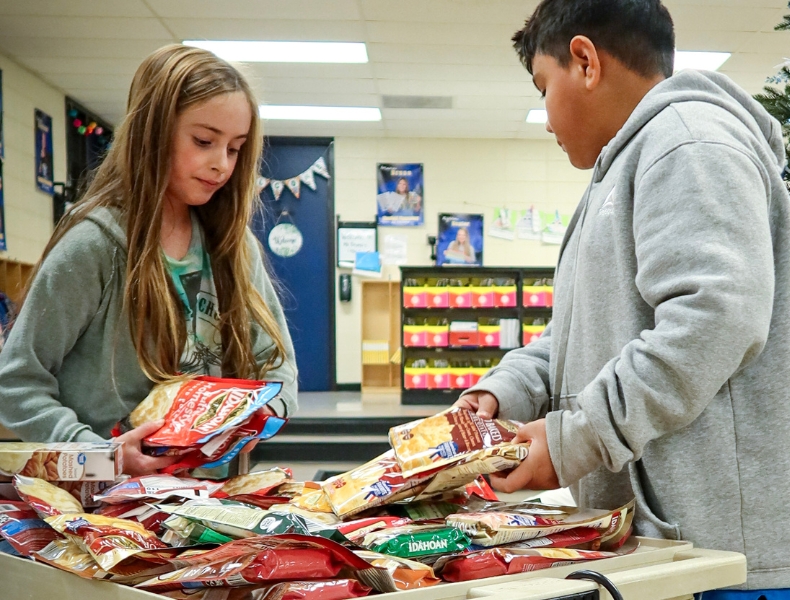K–12 schools using Participate Learning’s Global Leaders are seeing student enrollment increases—even as national numbers drop. Here’s why.
Across the country, public schools are facing an urgent challenge: declining enrollment.
Since 2020, more than 1.5 million students have left U.S. public schools, and districts have struggled to recover. But amid this trend, a growing number of schools are not just bouncing back—they’re thriving.
What do these schools have in common?
They’re using Global Leaders by Participate Learning: a structured, future-focused global education framework that’s helping schools achieve measurable gains in student enrollment.
See the full white paper behind these numbers and discover how schools are reversing enrollment decline.
Experienced Global Leaders schools that are seeing student enrollment gains:
| School | 2025 Enrollment Gain vs. 2019 | Matched Comparison School | Comparative Advantage |
| Franklinton Elementary (Franklin County Schools, NC) | +41 students | -92 students | +30.7% |
| Fred L. Wilson Elementary (Kannapolis City Schools, NC) | +34 students | -59 students | +19.6% |
| West Oxford Elementary (Granville County Schools, NC) | +20 students | -48 students | +17.7% |
While each of the schools in this table has implemented the framework for several years, even newer Global Leaders schools like Heritage Middle (Burke County Public Schools, NC) and Jackson Park Elementary (Kannapolis City Schools, NC) are seeing early signs of enrollment resilience with just two years of implementation!
| School | 2025 Enrollment Gain vs. 2023 | Matched Comparison School | Comparative Advantage |
| Heritage Middle (Burke County Schools) | +23 | -24 | +10.1% |
| Jackson Park Elementary (Kannapolis City Schools) | +58 | +9 | +10.5% |
Parents have started hearing great things about our school, and enrollment has increased. People from out of district have enrolled their students as they learn more about our programming.
—Bethany Bonnemere, Principal, West Oxford Elementary
Why Some Schools Are Rebounding
The new factors driving enrollment decisions
Before the pandemic, academic performance was a leading consideration for parents choosing a school. Today, the picture is broader.
Families are prioritizing schools that offer:
- Strong academic programs and real-world learning
- A school experience that feels relevant and purposeful
- Clear, open communication from school leaders
- Opportunities for students to explore future careers
- A positive environment where students are motivated and seen
In short: Families want schools that prepare their children for life beyond graduation, not just tests.
Global Leaders: Designed for the Future of Education
Participate Learning’s Global Leaders is a whole-school framework built to help schools meet these evolving expectations and stand out in a competitive educational landscape.
The framework rests on four key pillars:
- Career-Ready Graduates
- Shared Leadership
- Globally Empowered School Culture
- Connected Community
Each pillar is grounded in action-driven learning and helps students build essential human intelligence skills such as critical thinking, curiosity, communication, and problem-solving. In Global Leaders schools, these human intelligence skills are known as global competencies—durable skills that empower students to thrive in their future careers and make a positive impact on the world around them. These skills are critical in the current and future workforce.
We are teaching kids the skills they need to be effective in the future. Participate Learning made this an incredible experience for our students and staff.
—Sharon Meads, Principal, Chowan Middle School
See how Global Leaders provides a clear path for schools to stand out in a competitive landscape in our latest white paper.
Inside the Four Pillars: How Transformation Happens, Improving Student Enrollment
1. Career-Ready Graduates
Students engage in real-world projects that build leadership, collaboration, and career exploration into the school day.
At Heritage Middle School, a student-led initiative to eliminate plastic waste from the breakfast program became a schoolwide project that impacted cafeteria policy and reduced plastic use by hundreds of single-use bags per day.
Students used skills in communication, environmental science, and community organizing to lay the groundwork for future careers in public policy, sustainability, and advocacy.
2. Shared Leadership
Students, teachers, and staff all contribute to a school’s direction and culture. At Jackson Park Elementary, leadership is distributed through structured teams that empower everyone to contribute to schoolwide initiatives.
Shared leadership connects our entire staff and empowers students to find ways to make a positive change.
—Caroline Fongemy, Global Lead
When students feel their voices matter, families feel the school is invested in their children—and that builds trust.
3. Globally Empowered School Culture
Through daily activities and schoolwide celebrations, students and staff recognize global thinking, leadership, and personal growth.
At Fred L. Wilson Elementary, the staff uses shared language around global competencies like empathy, critical thinking, and self-awareness to shape classroom norms and behavior expectations.
This kind of consistent, unified school identity strengthens student motivation and parent satisfaction.
4. Connected Community
Schools become hubs for community action and collaboration. From STEM nights to cultural showcases, families are invited into the learning journey.
Students also partner with local organizations on service-learning projects that connect academic standards with real-world impact and demonstrate the school’s value both inside and outside the building.
Explore Global Leaders in action and learn how each pillar transforms school culture in From the Inside Out: How the Global Leaders Framework Drives Enrollment Resilience and School Transformation.
A Closer Look: K–12 Schools with Measurable Enrollment Impact
Global Leaders includes five levels of school designation—Establishing, Journey, Accomplished, Showcase, and School of Excellence—which reflect a school’s progress in implementing the framework with fidelity. Each level signals increasing alignment with the framework’s four pillars and deeper, schoolwide impact on student learning and school culture.
Data from North Carolina schools shows a clear connection between designation level and enrollment resilience:
- Schools with Showcase or Accomplished designations experienced the most significant enrollment gains.
- Even schools at the Journey level showed positive trends when compared to matched peer schools.
- Schools that paired Global Leaders with Dual Language programs saw amplified enrollment advantages, strengthening both academic distinctiveness and family engagement.
Why does this work?
Because Global Leaders addresses what matters to families:
- It helps students build career-relevant skills.
- It brings clarity and purpose to the school culture.
- It fosters pride and word-of-mouth advocacy from families who feel connected to their school.
This shows parents that our public school offers something they cannot get anywhere else.
—Kimberly Robertson, Principal, J.C. Sawyer Elementary
Built for Alignment, Not Overload
One of the reasons Global Leaders is so effective is its integration with existing school goals.
Rather than adding more to educators’ plates, the framework:
- Strengthens current school improvement plans
- Enhances existing initiatives and programs
- Uses clear, aligned indicators of success to track progress without requiring new systems or extra reporting
Schools receive ongoing support from a dedicated strategy coach, access to a robust community of practice, and tailored professional development to support long-term success.
For Schools Seeking to Grow, Retain, and Lead
In an era where public confidence in education is shifting, school identity matters more than ever.
Global Leaders gives schools a clear, future-focused identity rooted in real-world impact, student voice, and connected learning. And it’s proving to be a sustainable strategy for:
- Boosting enrollment
- Increasing community trust
- Preparing students for success in any career path
Next Steps: You’ve Seen the Highlights—Now Get the Full Picture
Download the complete study to explore how schools are aligning global learning with long-term resilience.




